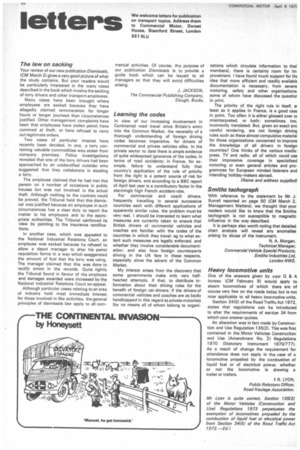Heavy locomotive units
Page 56

If you've noticed an error in this article please click here to report it so we can fix it.
One of the answers given by your 0. & A bureau (CM February 9) would apply to steam locomotives of which there are of course very few on the roads today but is not now applicable to all heavy locomotive units.
Section 34(5) of the Road Traffic Act 1972, states that regulations can be introduced to alter the requirements of section 34 from which your answer qudites.
An alteration was in fact made by Construction and Use Regulation 135(2). This was first contained in the Motor Vehicles Construction and Use (Amendment No. 2) Regulations 1970 (Statutory Instrument 1970/777). As a result of change the requirement for attendance does not apply in the case of a locomotive propelled by the combustion of liquid fuel or of electrical power, whether or not the locomotive is drawing a trailer or trailers.
F.R. LYON, Public Relations Officer, Road Haulage Association.
Mr Lyon is quite correct. Section 135(2) of the Motor Vehicles (Construction and Use) Regulations 1973 perpetuates the exemption of locomotives propelled by the combustion of liquid fuel or electrical power from Section 34(5) of the Road Traffic Act 1972.—Ed.1












































































































